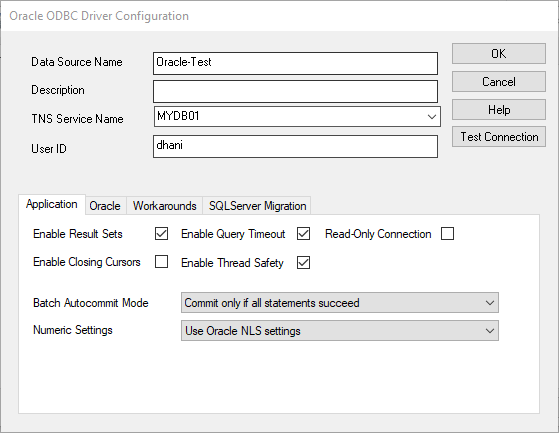

Oracle ODBC Driver is installed successfully. When successfully, you should get the following info: Next, open the command line (Run as administrator) and go to the folder where you unzip ODBC driver, in my case: Then add the TNS_ADMIN environment variable indicating the path to the tnsnames.ora file (in my PC it is c:\oracle\11.2.0\CLIENT\network\admin): Generally, you choose ODBC driver version based on tool version, that you use to get data from Oracle database.Īnyway, both downloaded files, you need to unzip to THE SAME folder (for example: c:\oracle\instant_client_11), then add the folder to the PATH environment variable: So in my situation I had to choose 32-bit ODBC driver.

I have on my PC: Windows 7 – 64-bit version, 64-bit Oracle client already installed but MS Office in 32-bit version. Well, I think the best way to answer this question is to describe my situation. Which version to choose – 32-bit or 64-bit? – here is the link for Instant Client Downloads for Microsoft Windows (圆4), for ODBC, you need instantclient-basic-windows.圆4-11.2.0.3.0.zip and instantclient-odbc-windows.圆4-11.2.0.3.0.zip files (Oracle 11.2.0.3 version) – here is the link for Instant Client Downloads for Microsoft Windows (32-bit), for ODBC, you need instantclient-basic-nt-11.2.0.3.0.zip and instantclient-odbc-nt-11.2.0.3.0.zip files (Oracle 11.2.0.3 version)
ORACLE ODBC MANAGER HOW TO
Here is a step-by-step instruction how to install the ODBC driver.įirst of all, you need to download proper files: Installation of the ODBC driver in Windows 7 is quite simple but there are a few tricks better to know.


 0 kommentar(er)
0 kommentar(er)
